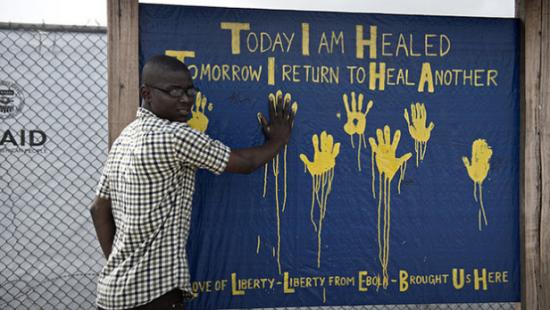DEVEX by Molly Anders Feb. 19, 2015
...While the Ebola crisis is far from over, officials in government and the international development community have begun to think more the medium and long term. What can they learn from past post-crisis recovery initiatives?
 Health worker Alivin Davis poses next to the a board featuring handprints of Ebola survivors in Liberia. Photo by: Neil Brandvold / USAID / CC BY-NC
Health worker Alivin Davis poses next to the a board featuring handprints of Ebola survivors in Liberia. Photo by: Neil Brandvold / USAID / CC BY-NC
Devex asked aid officials and government officials from the region how to avoid some of the most common pitfalls that can plague — haunt, even — recovery and reconstruction efforts. Here are three of them.
1. Quality over quantity.
....By not paying closer attention to the economic effects of foreign aid on the local market, humanitarian groups hurt livelihoods and slowed reconstruction in the country.
2. Prioritize local ownership....
Recent Comments